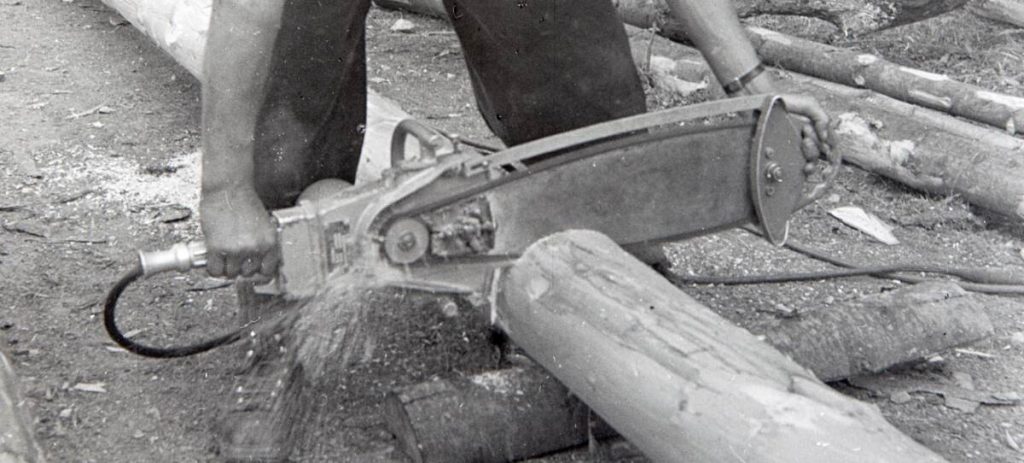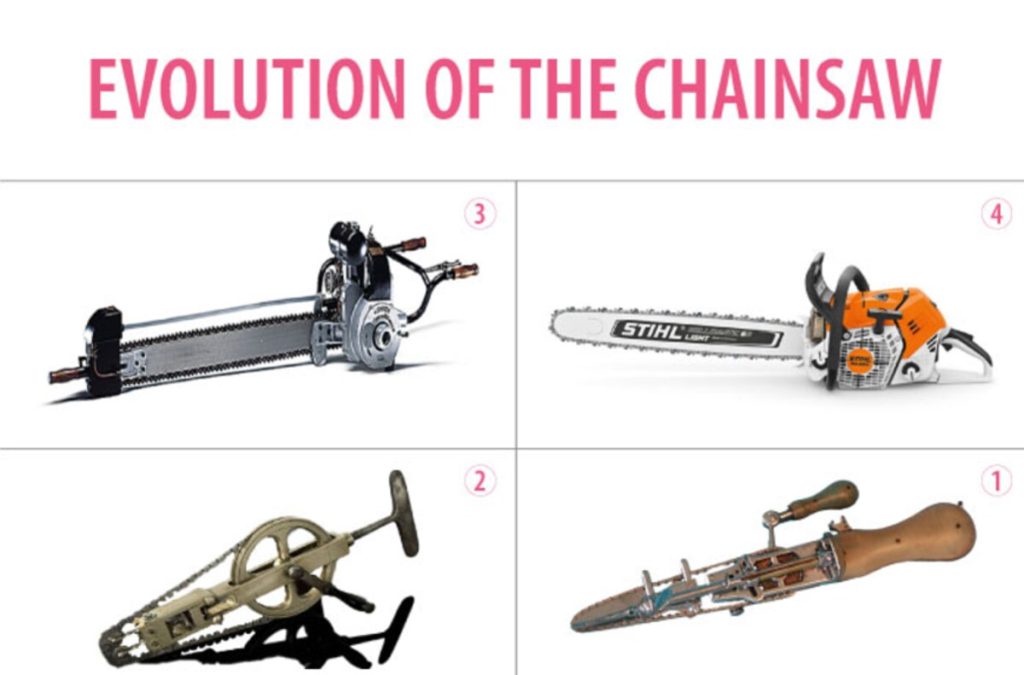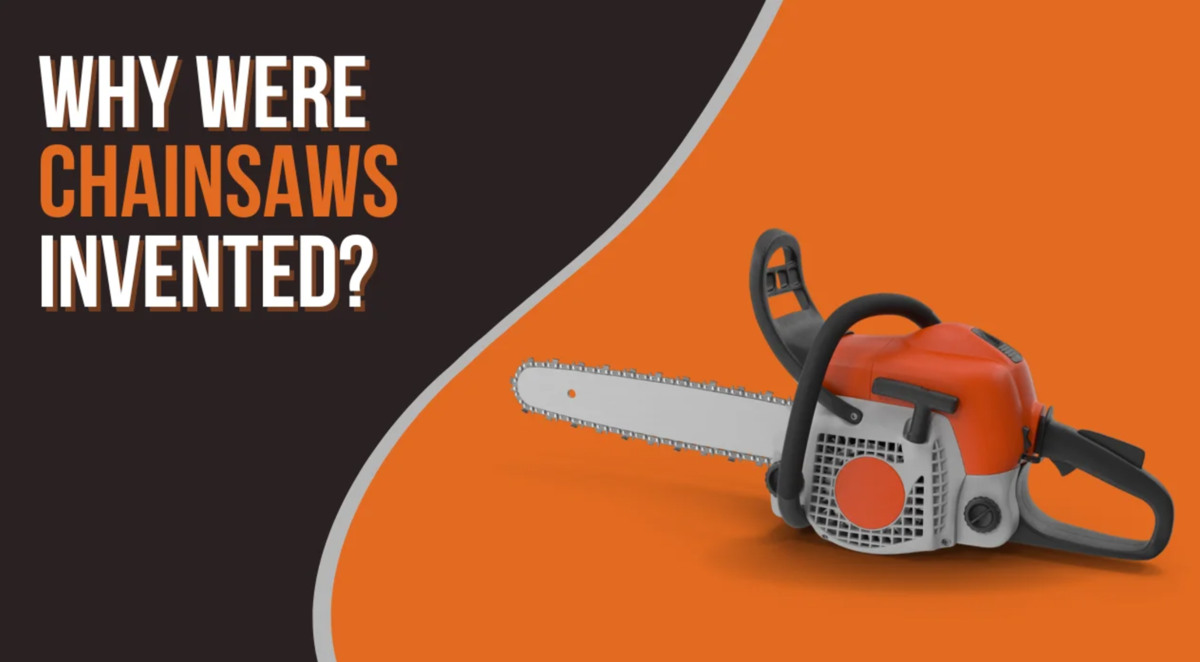Why Were Chainsaws Invented? The History and Purpose Behind Their Creation of Chainsaws perhaps might be among the most potent tools we use in our present days to cut down woods, clear lands, and perform other duties on forests. Yet, have you ever asked yourself, who created chainsaws and for what reason? What drives a more hazardous tool of power, and how did chainsaws evolve from whence they came? In this post, we are going to discover a really interesting history of chainsaws and where they come from.

Beginning Early History of Chainsaws
Chainsaw is an idea created decades ago, yet still, the idea seems far too fashionable today. Certainly not its motive to make things easy for a person to control their area forest, that is the thing how chainsaws were designed initially back, chainsaws were first discovered as invention products for doctors due to their use in preparing medical treatments and operations; you did just read.
Also, Read Revo Technologies Murray Utah Pioneering Tech Innovation.
The First Chainsaws Were Medical Tools
The first chainsaws were what medical professionals called an osteotome which was used among doctors during the late 18th century for assistance in cutting part of the human bone of the body of a childbirth patient. At some point during deliveries, complications such as the breaching of childbirth would insist on part pelvis area removal; however, a simple bone cutter machine was handy.
The chainsaws were hand-cranked and had chains that were formed from small, serrated blades. It is far from what the modern chainsaw looks like but very essential in medical practice.
Why Were Chainsaws Invented for Forestry?
From being a medical instrumentation tool to a felling tool during the 20th century, the idea was the same: making the process of cutting easier. Therefore, how did chainsaws evolve to become an integral part of the forestry equipment?
More Efficient Cutting of Trees Was Needed
Tree cutting as an occupation was very labor-driven earlier: all of which relied quite a lot on axes, saws, and mankind. With time, therefore, because the demand was increasing through societal progress on timber, more than this slow, very labor-intensive business was called for.
In the early 1900s, engineers and loggers searched to find a machine that could perform the jobs of several men in short periods. This was something that was going to have a big impact on people’s work, which sped up tree-felling operations and the production of timber and wood.
The Invention of the Modern Chainsaw

The first patent was granted in 1929 to the German engineer Andreas Stihl on a motorized chainsaw. Being an engineer, Stihl successfully developed a chainsaw powered by a gasoline engine. His invention made tree cutting more efficient because loggers could work faster and with great precision.
Then, German inventor Emil Lerp perfected it again to be even more compact so a person could use it easily by himself. By now, the chainsaw had hit a turning point in development: light, portable, and infinitely easier to use than the original design.
How Did Chainsaws Change the Forestry Industry?
Chainsaws made the cutting of trees speedier, easier, and safer and in the most significant ways faster than the pre-chainsaw loggers. There was a kind of teamwork that loggers could accomplish with axes and hand saws to bring one down within days, but by incorporating chainsaws in the form of motor-powered chainsaws, work is done in hours, dramatically increasing productivity as it is miles more efficient in comparison to the pre-mechanical procedure.
Impact on Labor and Productivity
The motorized chainsaw allowed something that the old days required more than several people to accomplish single-handedly. It meant that firms could decrease the number of staff needed for a piece of work but boost their production in the given period. This movement in employment contributed greatly to the rise of the timber industry, specifically in America and Europe.
It also meant that the operation of chainsaws was easier and faster. Loggers have no need for big clumsy tools that require a multi-stepped approach to saw into the tree. Rather, chainsaws have made the procedure fast, and accurate, and cut labor costs in order to eliminate hazards and exposures.
Chainsaws Are Employed in Clearing the Lands
The first significant application of chainsaws is in the land-clearing business. Land clearing had to be done because of the growth in cities, which required great pieces of land for buildings roads, and infrastructure. The chainsaw helped companies clear tree and brush lines more efficiently than otherwise possible.
Why Were Chainsaws Invented for Other Purposes?
Beyond their main role in forestry, chainsaws were soon discovered to be useful for other purposes because of their versatility and power. Chainsaw designs evolved with time to accommodate new tasks in different industries.
Chainsaws in Construction and Demolition
The chainsaw was widely used by the construction industry for cutting heavy materials such as concrete and steel. It brought into existence specialized chainsaws used for cutting through hard surfaces. The ability of chainsaws to cut hard materials quickly made them necessary for demolition work, so that buildings and structures were pulled down safely with a good amount of precision.
Chainsaws in Art
The world of art also boasts some of the most creative uses of chainsaws. Artists use these instruments to carve intricate designs into wood, ice, and even concrete. This is because, while providing a high degree of precision, the chainsaw can take large, fast cuts, and it has, therefore, been a very popular artistic tool, from sculptures to custom furniture.

The Evolution of the Chainsaw: A Timeline
Understanding why chainsaws were invented requires a more detailed look at their origins. Here is a chronology of some of the most important events in chainsaw history:
- 1780s: The first chainsaw, made for medical use, was invented.
- 1920s: Andreas Stihl created the first motorized chainsaw. This marked the starting point for modern chainsaw design.
- 1930s: Development of smaller, portable chainsaws that enabled a chainsaw to be operated by one man. Chainsaws became an integral part of the timber industry and soon saw application in building, land clearing, etc.
- 1950-1970s: They would still evolve with lighter, more efficient designs and new safety features including chain brakes, vibration reduction, and automatic lubrication systems in the 1990s to date.
Why Were Chainsaws Invented for Safety?
Although chainsaws might seem dangerous, the design from over the years has been targeting safety in the use. The early chainsaws were both efficient and cumbersome with a high element of risk in safety. People began to develop new safety features through which the number of accidents decreased.
Modern Chainsaw Safety Features
- Chain Brake: This is the point from where the chain on its braking stops the function to avoid kickback safety from unexpected.
- Anti-vibration Systems: The new chainsaws have anti-vibration technology that reduces the effects given to hand and arm muscles for lesser fatigue and better time utilization.
- Safety Guards: These guards prevent flying debris or accidental contact with the chain from reaching the user.
Conclusion: Why Were Chainsaws Invented
Why Were Chainsaws Invented? stems from the need for more efficient tools in both medical and industrial fields. At first, they were used in surgery but, as the design of those chainsaws evolved, they became very important in forestry, construction, and even art. Presently, chainsaws remain a powerful tool that is very much in use, providing both speed and precision.
The invention of the chainsaw has affected many sectors, whereby it enhances the productivity of the work and efficiency in all the processes of production. And though they were designed for medical application, their extensive application in various other areas changed everything in how we interacted with our environment and so built our world. You’d be felling trees and clearing land, or carving something intricate; it is without a doubt one of your most essential tools.




